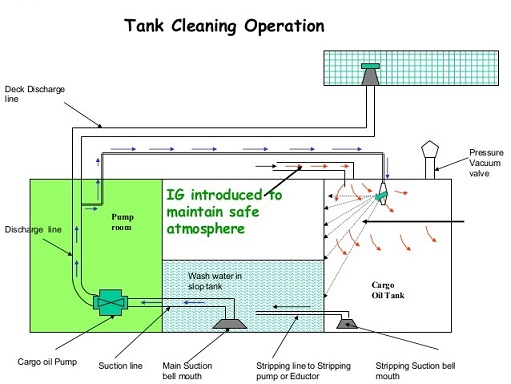
Tanker operation : crude oil washing procedure
Crude oil washing (C.O.W.) is a system whereby oil tanks on a tanker are cleaned out between voyages not with water, but with crude oil - the cargo itself. The solvent action of crude oil makes the cleaning process far more effective than when water is used. However, such a technique of washing cargo tanks involves many hazards, and careful consideration will need to be made for safe planning and execution. Preceding operating utmost diligence in planning and execution needs to be made for a safe working environment. The following are the basic guidelines for quick reference. The Chief Officer, as qualified by the requirements as laid down by flag state administration of the ship and any port regulations that may be in force locally, supervise all C.O.W. operations.


